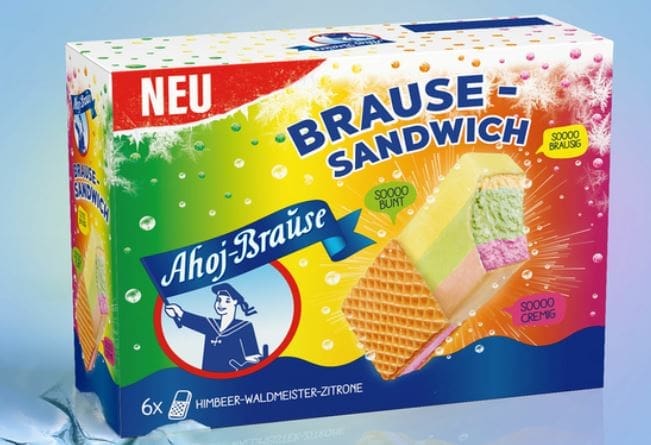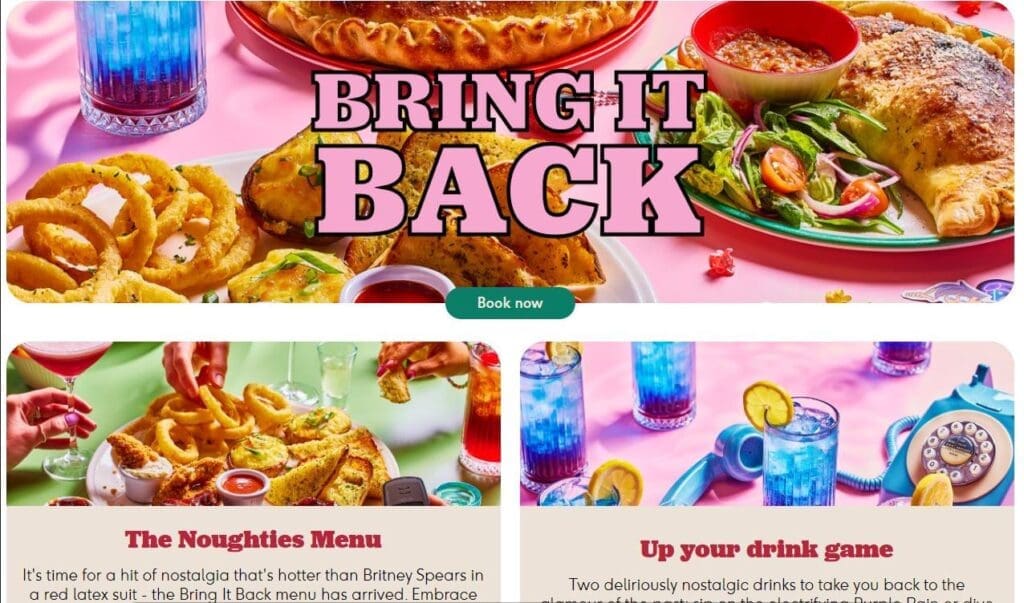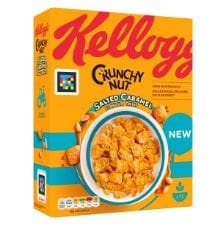Utilising yesteryear’s charm, food and drink enterprises can captivate the modern consumer with a vintage twist.
Amidst COVID-19, people have cultivated a heightened awareness of their wellbeing, expanding its scope to encompass holistic wellness, including mental, emotional, and spiritual health.
Aligned with emotional wellness, Throwback Nostalgia has emerged as a pivotal trend. Its appeal extends beyond those with firsthand experiences, reaching out to individuals desiring to immerse in bygone experiences anew. Engaging with the past can facilitate the creation of unique memories against the backdrop of a different era.
In response to global challenges such as pandemics and economic inflation, consumers find solace in nostalgic brands to:
- evoke cherished moments,
- and offer reassurance regarding quality and taste.
The penchant for the “pre-pandemic years” – before COVID-19 struck – arises from a collective idealisation of this period as more favourable for multitude. This has led enterprises across various sectors to employ nostalgia as a potent marketing instrument, as manifested by Spotify’s customised playlists from the 2000s, the immense popularity of retro-themed series like ‘Stranger Things’, or last summer’s ‘Barbie’ movie craze reviving childhood tales for many.
Why does this resonate with consumers? Memories serve as a powerful catalyst for people, and in specific arenas like the food and beverage sector, a considerable demographic savours products that rekindle recollections of yore. This sentimentality for the halcyon days is a marketable asset as it conjures contentment and instills a comforting assurance that can sway purchasing decisions. Amidst significant global transitions and unrest, the solace found in familiar products from times past provides a comforting anchor for consumers.
Journey with us down the lanes of reminiscence and discover why nostalgia marketing is proving to be an efficacious tactic for branding, especially within the food and drink realm.
The Significance of Nostalgia in Consumer Purchasing Decisions
Nostalgia exerts a significant influence on the shopper’s decision-making process, notably when purchasing confectionery, as 76% of UK consumers gravitate towards sweets reminiscent of their childhood.
The pleasure of confectionery lies in its flavour. Established brands such as Haribo ought to cultivate positive emotional bonds with customers through direct engagement or imaginative advertising endeavours emphasising the delightful taste and flavour profiles of their offerings. Moreover, accentuating confectionery’s role as a comforting indulgence resonates with customers seeking solace in sweets. Given that nearly two-fifths of German consumers favour flavours harkening back to their childhood, leveraging nostalgic sweets could encourage snacking and bring a sense of past comforts to German customers. This is synonymous with the Flavour Trend of Comfort in Familiarity, which delves into comfort derived from recognisable flavours. Prominent snack brands have the chance to rejuvenate their classic offerings by infusing popular tastes into new or revitalised product concepts. For instance, Ahoj-Brause amalgamates two childhood staples – ice cream sandwich and sherbet powder flavours.


Ahoj-Brause Ice Cream Sandwich. Source: ahoj-brause.de
Flavours, textures, and scents continue to enchant. The longing for a trip back in time or a novel experience drives consumers to toy with sweets that offer a variety of palates. While many candy brands already prioritise delight and enjoyment, there is scope to introduce limited editions or retro products to capitalise on the nostalgia marketing wave. The rich heritage of such products commands loyalty from consumers, driving repeated purchases. For instance, in Canada, three-quarters of confectionery consumers show preference for chocolate and candies from their formative years. This pattern is mirrored in the UK, Germany, and other arenas like the US, where almost half of the dessert and candy enthusiasts appreciate desserts evocative of their childhood.
Embracing Nostalgia Marketing to Uplift Spirits
Studies indicate that 76% of US consumers turn to sugary snacks and chewing gum to enhance their mood. Millennials, in particular, pursue foods and beverages that marry fun with functionality, as they strive to avoid the feeling of deprivation while making health-conscious choices. Innovative brands like Olipop and OffLimits Cereal adeptly intertwine health-positive claims with entertaining flavours and retro branding, resonating with Millennials by reinvigorating beloved childhood cereal experiences through playful packaging designs.


OffLimits pioneers nostalgia marketing with their vibrant designs. Source: eatofflimits.com
Seeking pleasure through delightful foods is crucial in the burgeoning domain of self-care. While numerous confectionary brands already emphasise pleasure and enjoyment, opportunities exist for introducing limited-edition or nostalgic delicacies that evoke a sense of familiarity among consumers, hence fostering tranquillity and diminishing stress.
How are Brands Leveraging Nostalgia Marketing?
Brands possessing a distinct and evocative legacy lay the groundwork for the introduction of new flavours and formulations. Although consumers may exhibit interest in novel offerings, they often exhibit hesitance towards venturing into untried flavours or forms, particularly when financial risk is involved. Herein, heritage brands have an edge due to their established renown, thereby providing a sense of financial security with more immersive purchases. They also furnish a link to certain periods or evoke feelings for bygone eras, particularly appealing amidst current international upheavals. Consequently, these brands ought to exploit their renown for time-honoured sweets by reintroducing vintage flavours and advertising campaigns.
Numerous brands have acknowledged the effective pull of nostalgia in marketing and are exploiting this sentiment to their benefit. The enduring appeal of heritage brands is anchored in their legacy, which secures customer fidelity — with 67% of German chocolate purchasers indicating a preference for the same chocolate they savoured as children. These brands continue to delve into retro and nostalgia marketing to underscore familiarity and pleasure, aligning their image with reminiscent elements of yesteryear.
In the UK, Frankie & Benny’s unveiled a ‘Bring It Back’ Spring Menu in April 2023, boasting dishes and pricing from 2003. For a fortnight until May 2023, the menu featured a 20.03% reduction, catering to budget-conscious patrons amid the fiscal crunch. Utilising nostalgia as a marketing approach enables Frankie & Benny’s to forge emotional ties with customers as people often seek solace in the past when confronted with political disarray and escalating inflation.

Source: frankieandbennys.com/bring-it-back
Yet, possessing a storied brand does not necessitate stagnancy in product offerings. In the UK, Kellogg’s introduced a new twist to its iconic ‘Crunchy Nut flakes’ in December 2022. In turn, Kellogg’s not only capitalised on the retro nostalgia trend but also catered to the growing demand for salted caramel varieties. Building on this success, Weetabix’s Weetos augmented its selection with a caramel flavour due to its indulgent and nostalgic associations. Additionally, this year Weetabix enriched its ‘Melts’ breakfast cereal range with a chocolate hazelnut variant, understanding that consumers will link the chocolate hazelnut flavour to fond recollections of after-school treats, thereby awakening a sense of nostalgia.

“`

Crunchy Nut Salted Caramel Flavour Twist, source: kelloggs.co.uk
Exploring nostalgia marketing involves far more than simply reviving former products or introducing them anew with a contemporary spin. Implementing marketing campaigns and enveloping the entire brand in a nostalgia theme is another method to embark upon this trend. Nestlé commemorated the 70th anniversary of ‘Shreddies’ by continuing its association with Nick Knowles and revitalising their packaging with a regal golden crown, whilst inviting customers to divulge their cherished Shreddies recollections through the campaign #Shreddies70, stirring up nostalgic feelings for the cereal.
Back to the Future: Our Key Takeaways
- Engage Consumers’ Longing for Halcyon Days
Within a world fraught with conflict, consumers recognise their lost comforts and the potential hazards that await them, which in turn, rekindles fond memories of bygone days. To triumph over contemporary crises, they seek products and experiences that evoke a sense of warmth and security akin to earlier times.
- Leverage Nostalgia to Launch New Offerings
When introducing novel offerings, rely on established heritage brands that hold a loyal consumer base to strike a chord with those facing financial strain.
Confectionery brands that individuals enjoyed in their youth often hold a special place in their hearts. Producers can capitalise on this affection by enhancing these products with more refined flavours or textures to appeal to adult tastes.







